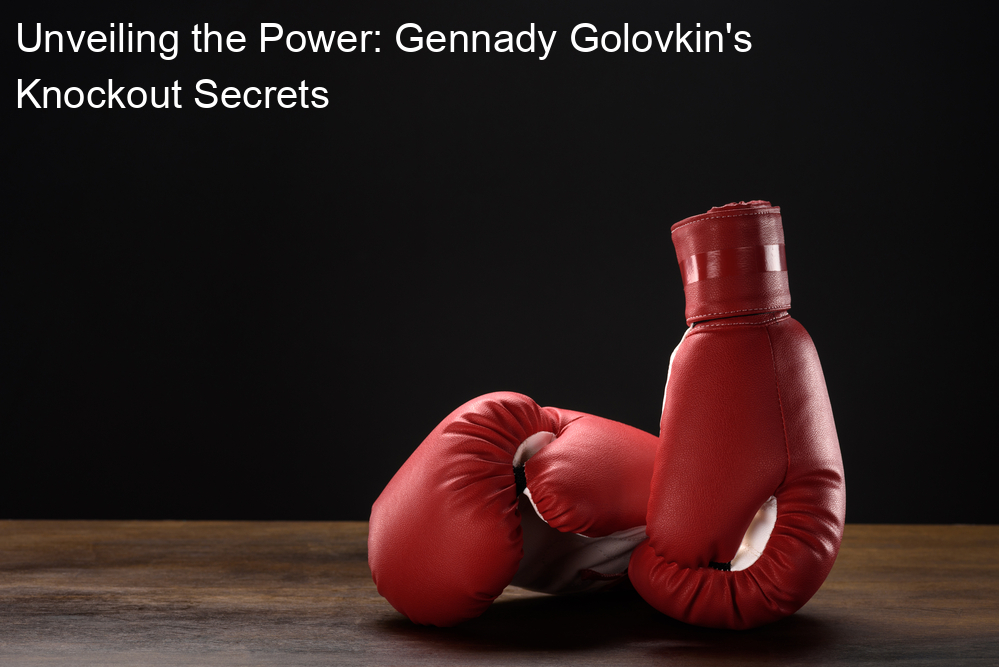Introduction to Counter Punching Techniques
Hey there, boxing enthusiasts! Today, we’re diving into the exciting world of counter punching. This is a technique that can really give you an edge in the ring, so let’s get started!
- Definition of counter punching in boxing
- Importance of mastering counter punching techniques
So, what exactly is counter punching? Well, counter punching is a type of boxing move where you respond to your opponent’s punch with a punch of your own. It’s all about timing and accuracy. You wait for your opponent to throw a punch, then you dodge or block it, and immediately respond with a punch. It’s like saying, “Nice try, but it’s my turn now!”
Now, you might be wondering, why should I bother learning counter punching? Well, mastering counter punching techniques can make a huge difference in your boxing game. It can help you take control of the fight, keep your opponent on their toes, and even turn the tide of a match in your favor. Plus, it’s a great way to show off your skills and impress your friends!
So, are you ready to learn more about counter punching? Great! Let’s dive deeper into this fascinating boxing technique.
Understanding Boxing Defense Strategies
Let’s dive into the world of boxing and learn about the importance of defense strategies. These strategies are not just about avoiding punches, but also about setting up opportunities to land your own blows. So, let’s get started!
- Importance of defense in boxing
- Common boxing defense strategies
- Blocking: This is the most basic defense strategy where you use your gloves to block your opponent’s punches.
- Dodging: Also known as slipping, this strategy involves moving your body or head to avoid punches.
- Parrying: This strategy involves deflecting your opponent’s punch to the side, creating an opening for a counterattack.
- Counter-punching: This is a more advanced strategy where you use your opponent’s momentum against them, landing a punch as they are attacking.
Defense in boxing is as crucial as offense. It’s not just about throwing punches; it’s also about not getting hit. A good defense can help you avoid damage, tire out your opponent, and create openings for your attacks. Remember, the best boxers are those who can hit without getting hit!
There are several defense strategies in boxing. Let’s look at a few:
Mastering these defense strategies can take your boxing skills to the next level. So, keep practicing and always remember, a good defense is the best offense!
Role of Counter Punching in Boxing Defense Strategies
Boxing isn’t just about throwing punches. It’s also about knowing when and how to avoid them. That’s where counter punching comes in. It’s a crucial part of any boxer’s defense strategy. Let’s dive into how it fits into the overall defense and look at some examples of successful counter punching.
- How Counter Punching Fits into Overall Defense
- Examples of Successful Counter Punching as a Defense Strategy
Counter punching is a smart, strategic move in boxing. It’s not just about dodging or blocking an opponent’s punch. It’s about using their attack to your advantage. When an opponent throws a punch, they leave themselves open for a moment. That’s your chance to strike back. It’s a way of turning defense into offense.
Counter punching requires quick reflexes and sharp timing. You need to anticipate your opponent’s moves, dodge their punch, and strike back all in a split second. It’s a skill that takes practice, but it can give you a big advantage in the ring.
Many famous boxers have used counter punching to win their fights. Let’s look at a couple of examples.
One of the most famous counter punchers in history is Floyd Mayweather Jr. He’s known for his defensive style and his ability to avoid punches. But he’s also a master at counter punching. He often dodges an opponent’s punch and quickly strikes back with a punch of his own. This strategy has helped him win many fights and become one of the most successful boxers in history.
Another great example is Juan Manuel Marquez. He’s known for his ability to anticipate his opponent’s moves and strike back with powerful counter punches. His most famous counter punch was in his fourth fight against Manny Pacquiao. Marquez knocked Pacquiao out with a powerful right hand counter punch, winning the fight.
So there you have it. Counter punching is a key part of boxing defense strategies. It requires skill and practice, but it can give you a big advantage in the ring. So keep practicing your counter punches, and you’ll be dodging and striking back like a pro in no time.
Basic Boxing Counter Moves
Hey there, boxing enthusiasts! Today, we’re going to dive into the exciting world of basic boxing counter moves. These are the moves that can help you turn the tide in a match, even when you’re on the defensive. So, let’s get started!
- Introduction to Basic Counter Moves
Counter moves in boxing are all about timing and anticipation. They’re the moves you make in response to your opponent’s punches, turning their offense into your opportunity. It’s like a dance, where you’re always ready to make your next move based on your partner’s actions.
Some of the most common basic counter moves include the counter jab, the cross counter, and the hook counter. These moves can be used to exploit the openings your opponent leaves when they throw a punch. But remember, practice makes perfect! So, don’t be discouraged if you don’t get it right the first time.
- Step-by-Step Guide to Executing Basic Counter Moves
Now, let’s break down how to execute these basic counter moves. Remember, the key to a successful counter move is timing and anticipation.
Counter Jab:
- Stand in your boxing stance, with your fists up and your eyes on your opponent.
- Watch for your opponent to throw a jab.
- As soon as you see the jab coming, step back slightly to avoid the punch.
- Immediately after stepping back, step forward and throw your own jab. Aim for where your opponent’s face will be when their punch misses you.
Cross Counter:
- Again, start in your boxing stance, watching your opponent carefully.
- When your opponent throws a jab, slip to the outside of the punch.
- As you slip, throw a cross punch with your back hand. Aim for your opponent’s head or body, depending on what’s open.
Hook Counter:
- Start in your boxing stance, ready for your opponent’s move.
- When your opponent throws a straight punch, slip to the inside of the punch.
- As you slip, throw a hook punch with your front hand. Aim for your opponent’s head or body, depending on what’s open.
And there you have it, folks! Those are your basic boxing counter moves. Remember, practice is key. So, get out there and start training!
Advanced Boxing Techniques: Counter Moves
- Introduction to advanced counter moves
- Step-by-step guide to executing advanced counter moves
Boxing isn’t just about throwing punches; it’s also about avoiding them. That’s where counter moves come into play. Advanced counter moves are techniques that skilled boxers use to dodge their opponent’s punches and quickly strike back. These moves require a high level of skill, quick reflexes, and a deep understanding of boxing strategy. Counterpunching is a critical part of boxing that can give you an edge in the ring.
Let’s break down how to execute some advanced counter moves:
| Step | Description |
|---|---|
| 1 | Stay alert. Keep your eyes on your opponent at all times. |
| 2 | Anticipate your opponent’s moves. Try to predict what they’re going to do next. |
| 3 | When you see your opponent throw a punch, quickly move to avoid it. This could involve stepping to the side, ducking, or leaning back. |
| 4 | As soon as you’ve dodged the punch, immediately strike back. Aim for an area that your opponent has left exposed. |
| 5 | Quickly get back into your defensive stance to prepare for the next punch. |
Remember, practice makes perfect. The more you practice these steps, the more natural they’ll become. Soon, you’ll be counterpunching like a pro!
Counter Punching Drills: Boxing Training for Counter Punching
So, you’ve got the basics of boxing down, and now you’re ready to level up your game. Let’s talk about counter punching drills. These are the exercises that will help you master the art of counter punching, a crucial skill in boxing.
- Importance of drills in mastering counter punching
- Examples of effective counter punching drills
- The Mirror Drill: This drill involves two boxers mirroring each other’s movements. It helps improve your reaction time and teaches you how to anticipate your opponent’s moves.
- The Slip and Counter Drill: This drill involves slipping an incoming punch and immediately launching a counter attack. It’s a great way to practice your timing and accuracy.
- The Catch and Counter Drill: In this drill, you’ll practice catching your opponent’s punch with your gloves and immediately launching a counter punch. It’s a great way to improve your defensive skills while also working on your counter attacks.
Drills are the backbone of any training regimen, and boxing is no exception. They help you practice and perfect your moves until they become second nature. When it comes to counter punching, drills are even more important. They help you develop quick reflexes, improve your timing, and teach you how to respond effectively to your opponent’s moves. By repeatedly practicing these drills, you’ll be able to land powerful counter punches even under pressure.
Ready to get started? Here are a few counter punching drills that you can incorporate into your training:
Remember, practice makes perfect. So, don’t get discouraged if you don’t master these drills right away. Keep at it, and you’ll soon see improvements in your counter punching skills. Happy training!
Professional Boxing Techniques: Counter Punching Drills
Hey there, boxing enthusiasts! Are you ready to level up your game? Today, we’re diving deep into the world of professional boxing, focusing on counter punching drills. These drills are not just for pros; they can help anyone improve their boxing skills. So, let’s get started!
- Introduction to professional level counter punching drills
- Step-by-step guide to executing professional counter punching drills
- Step 1: Stand in front of a punching bag. Get into your boxing stance, with your hands up to protect your face.
- Step 2: Imagine the bag is your opponent. Visualize them throwing a punch at you.
- Step 3: Dodge the imaginary punch. Move your head to the side, just enough to avoid the punch.
- Step 4: Immediately after dodging, throw a counter punch at the bag. Aim for where you imagine your opponent’s face would be.
- Step 5: Repeat this drill for several rounds. Try to increase your speed and accuracy with each round.
Counter punching is a crucial skill in boxing. It’s all about timing and accuracy. When your opponent throws a punch, you dodge it and quickly respond with your own. Sounds simple, right? But it takes a lot of practice to master. That’s where counter punching drills come in. These drills help you improve your reaction time, accuracy, and power. They’re used by professional boxers to stay sharp and ready for any fight.
Ready to try some drills? Here’s a simple one to get you started:
Remember, the key to counter punching is timing. Practice this drill regularly, and you’ll see improvements in your counter punching skills. Happy training!
Boxing Skills and Techniques: Counter Punching
Counter punching is a crucial skill in boxing. It’s not just about throwing punches; it’s about timing, accuracy, and strategy. Let’s dive into the key skills needed for effective counter punching and how you can develop these skills through training.
- Key skills needed for effective counter punching
Counter punching requires a combination of several skills. Here are the most important ones:
- Timing: This is perhaps the most critical skill in counter punching. You need to know when to strike to catch your opponent off-guard. It’s all about anticipating your opponent’s moves and responding at the right moment.
- Speed: Speed is essential in counter punching. You need to be quick to respond to your opponent’s moves and deliver your counter punch effectively.
- Accuracy: It’s not enough to just throw a punch; you need to hit your target. Accuracy ensures that your counter punch lands where it can do the most damage.
- Footwork: Good footwork is crucial in counter punching. It allows you to move around the ring quickly, dodge your opponent’s punches, and position yourself for effective counter punches.
- How to develop these skills through training
Developing these skills requires dedicated training. Here are some tips:
- Practice timing: Work on your timing by practicing with a partner or a punching bag. Try to anticipate the bag’s movement and strike at the right moment.
- Improve speed: Speed drills can help improve your quickness. These can include shadow boxing, speed bag workouts, and quick footwork exercises.
- Enhance accuracy: Target practice is essential for improving accuracy. Focus on hitting specific spots on the punching bag, and gradually increase the difficulty as you improve.
- Work on footwork: Footwork drills can help you move around the ring more effectively. Practice moving in all directions and changing your position quickly.
Remember, practice makes perfect. Keep working on these skills, and you’ll see improvement over time. Happy boxing!
Boxing Counter Attack Training
Counter attack training is a crucial part of boxing. It’s all about learning how to respond quickly and effectively when your opponent throws a punch. Let’s dive into why it’s so important and some examples of effective training routines.
- Importance of counter attack training in boxing
- Examples of effective counter attack training routines
- Slip and Counter: This drill involves slipping an incoming punch and immediately throwing a counter punch. It helps to improve your timing and accuracy.
- Block and Counter: In this routine, you block your opponent’s punch and then quickly throw a counter punch. This helps to improve your defensive skills and your ability to react quickly.
- Counter Punch Bag Drill: This drill involves practicing your counter punches on a punching bag. It’s a great way to improve your power and precision.
Counter attack training is a key part of boxing for several reasons. First, it helps you to protect yourself. When you’re in the ring, you need to be able to react quickly to your opponent’s moves. If they throw a punch, you need to know how to dodge it and strike back. This is where counter attack training comes in.
Second, counter attack training can give you an edge in a match. It’s not just about defending yourself, it’s also about taking control of the fight. When you can effectively counter your opponent’s attacks, you can keep them on their toes and maintain the upper hand.
Lastly, counter attack training helps to improve your overall boxing skills. It requires quick thinking, agility, and precision – all of which are crucial for a successful boxer. Learn more about counter attack in boxing here.
There are many different counter attack training routines that you can try. Here are a few examples:
Remember, the key to effective counter attack training is consistency. The more you practice, the better you’ll get. So, get out there and start training!
Techniques for Counter Punching in Boxing
Counter punching in boxing is an art that requires skill, timing, and a good understanding of your opponent’s moves. Let’s dive into some popular techniques and how you can apply them in a boxing match.
- Overview of techniques for counter punching
- The Slip: This technique involves moving your head to the side just as your opponent throws a punch, allowing their punch to ‘slip’ past you. Once their punch has missed, you have a clear shot to counter-attack.
- The Pull: In this technique, you lean back out of the way of your opponent’s punch, then quickly lean back in to deliver your counter punch.
- The Duck: This technique involves ducking under your opponent’s punch and then coming up with a counter punch.
- How to apply these techniques in a boxing match
- Practice: The key to mastering any technique is practice. Spend time in the gym working on these moves until they become second nature.
- Timing: Good counter punching requires excellent timing. You need to be able to predict your opponent’s moves and react quickly.
- Patience: Don’t rush your counter punches. Wait for the right moment when your opponent is off-balance or has left themselves open.
Counter punching techniques are all about taking advantage of your opponent’s moves. Here are a few techniques that you can master:
Applying these techniques in a boxing match requires practice and good timing. Here are some tips:
Remember, the best boxers are not just good at attacking, but they’re also masters of defense and counter-attacking. So, keep practicing these techniques and soon you’ll be counter punching like a pro!
Conclusion: Mastering the Art of Counter Punching
As we wrap up this deep dive into the world of counter punching, let’s take a moment to recap the key points we’ve covered and reflect on why mastering this skill is so crucial in boxing.
- Recap of key points covered in the article
- Final thoughts on the importance of mastering counter punching in boxing
Firstly, we introduced you to the basics of counter punching techniques, followed by a detailed look at boxing defense strategies. We then moved onto basic boxing counter moves and drills specifically designed for training counter punching. We also discussed various boxing skills and techniques related to counter punching and how to effectively train for a counter attack. Finally, we explored some advanced techniques for counter punching in boxing.
Mastering the art of counter punching is not just about throwing punches back at your opponent. It’s about timing, precision, and strategy. It’s about understanding your opponent’s moves and using their momentum against them. It’s about being patient, waiting for the right moment, and then striking with power and accuracy. In essence, counter punching is a game of chess played at high speed with gloves on. It’s what separates the good boxers from the great ones. So, keep practicing, stay focused, and remember – every champion was once a contender who refused to give up.
Remember, the road to mastering counter punching is a journey, not a sprint. Keep practicing, stay patient, and you’ll see the results in the ring. Happy boxing!






